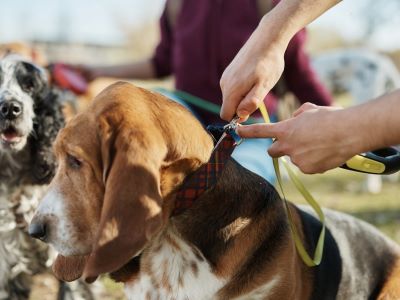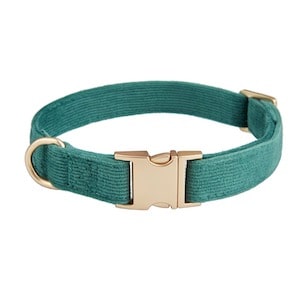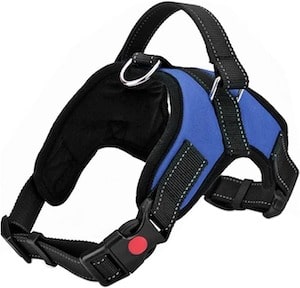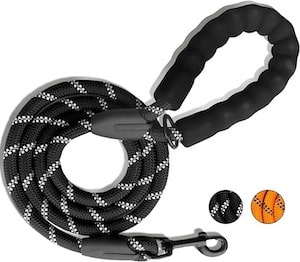How to Fix a Dog Collar That’s Too Big? Every dog owner must have a collar for their pet. They offer a place to fasten tags and leashes and keep your pet safe and secure. A collar that is too big, however, can endanger your dog’s safety because it is easy to lose or become tangled up in objects. Don’t worry if your dog’s collar is too big. You only need to follow a few easy steps to fix it.
You Might Also Like:
Why Your Dog Needs a Collar?

You might be unsure of your dog’s initial need for a collar. However, a collar for your dog can become increasingly important as it grows older. Some of the reasons include:
Identification:
Using a collar to identify your dog is a quick and easy process. It must include information like your dog’s name, contact details, and other crucial details. An identification collar might assist locate you if your dog runs off or gets lost.
Safety:
Moreover, collars can keep your dog secure. For instance, using a collar can make it simpler for you to capture your dog if they are running loose. LED lights or reflective collars can help make your dog more visible at night, lowering the possibility of accidents.
Control:
A collar is a key training tool for dogs. You can regulate your dog’s movements by attaching a leash to a collar that fits properly. This is especially crucial if you walk your dog in public or among other people or animals.
Health:
Some collars are designed to provide additional health benefits. For example, flea and tick collars can help protect your dog from parasites, while calming collars can help reduce anxiety in dogs.
Signs a Dog Collar is Too Tight
It’s important to ensure that your dog’s collar is properly fitted to avoid discomfort or injury. Here are some signs that your dog’s collar may be too tight:
- Difficulty breathing or panting excessively
- Swelling or irritation around the neck
- Rub marks or hair loss
- Reluctance to move or play
If you notice any of these signs, it’s important to loosen or remove the collar immediately. If you’re unsure how to properly fit a collar, consult with a veterinarian or a professional dog trainer.
Steps to Fix a Dog’s Collar That’s Too Big

Following are the steps on how to fix a dog collar that’s too big:
Step 1: Measure Your Dog’s Neck
The first step in adjusting a too-large collar is to measure your dog’s neck size. The area of your dog’s neck where the collar sits should be measured with a tape measure. In order to ensure that the collar will fit comfortably, add two inches to this measurement. If your current collar cannot be altered, you may need to get a new one; this will give you the accurate size.
Step 2: Adjust the Collar
If the collar on your dog is adjustable, you might be able to modify it without getting a new one. The buckle or clasp on the majority of collars can be adjusted to reduce the collar’s size. Try the collar on your dog to determine if it fits snuggly after adjusting the buckle or clasp to the proper size.
Step 3: Use a Collar Extender
Use a collar extender if the collar cannot be made small enough on its own. A straightforward tool that adds length to the collar is called a collar extender. They are available online or at the majority of pet supply retailers. Just fasten the collar extend er on the collar and alter the size as needed to utilise it.
Step 4: Add Additional Holes
It might be possible to add more holes to your dog’s collar to make it smaller if it includes a buckle and is made of leather or a similar material. Make a fresh hole in the collar using a leather hole punch or a pointed object like a nail. The holes should be consistently spaced, and the collar should suit your dog before use.
FAQs
How tight should a dog collar be?
A dog’s collar should be snug enough that it cannot slip off, but not so tight that it is uncomfortable or restricts breathing or movement. To check if the collar is properly fitted, you should be able to fit two fingers comfortably between the dog’s neck and the collar. If the collar is too loose, it may slip off or the dog may be able to slip out of it, which can be dangerous if the dog is not trained or contained in a safe area.
What happens if a dog collar is too tight?
If a dog collar is too tight, it can cause discomfort, pain, chafing, and even injury to the dog’s neck. A collar that is too tight can restrict the dog’s breathing or swallowing, particularly in brachycephalic breeds (short-snouted breeds), which can lead to serious health problems, including suffocation.
What happens if a dog collar is too loose?
A collar that is too loose can also be ineffective for controlling the dog and can make it difficult to attach a leash for walks or other activities. This can put the dog at risk of running away, getting into fights with other animals or getting hit by a car.
Conclusion
In conclusion, fixing a dog collar that is too big is a straightforward procedure that only requires a few simple tools and materials. It’s crucial to make sure the collar fits properly and is secure, whether you adjust it, use a collar extender, or add more holes. A properly fitting collar will keep your dog safe and secure and give you, the dog owner, peace of mind.
References:
- Collar and Harness Options for Dogs | VCA Animal Hospital. (n.d.). Vca. Retrieved February 28, 2024, from https://vcahospitals.com/know-your-pet/collar-and-harness-options-for-dogs
- How to measure your dog for a collar. (n.d.). Retrieved February 28, 2024, from https://www.bluegizmo.co.uk/collarmeasure
- PACDOG – Experts in Pet Control Systems. (n.d.). Retrieved February 28, 2024, from https://www.pacdog.co.uk/Articles.asp?ID=348






